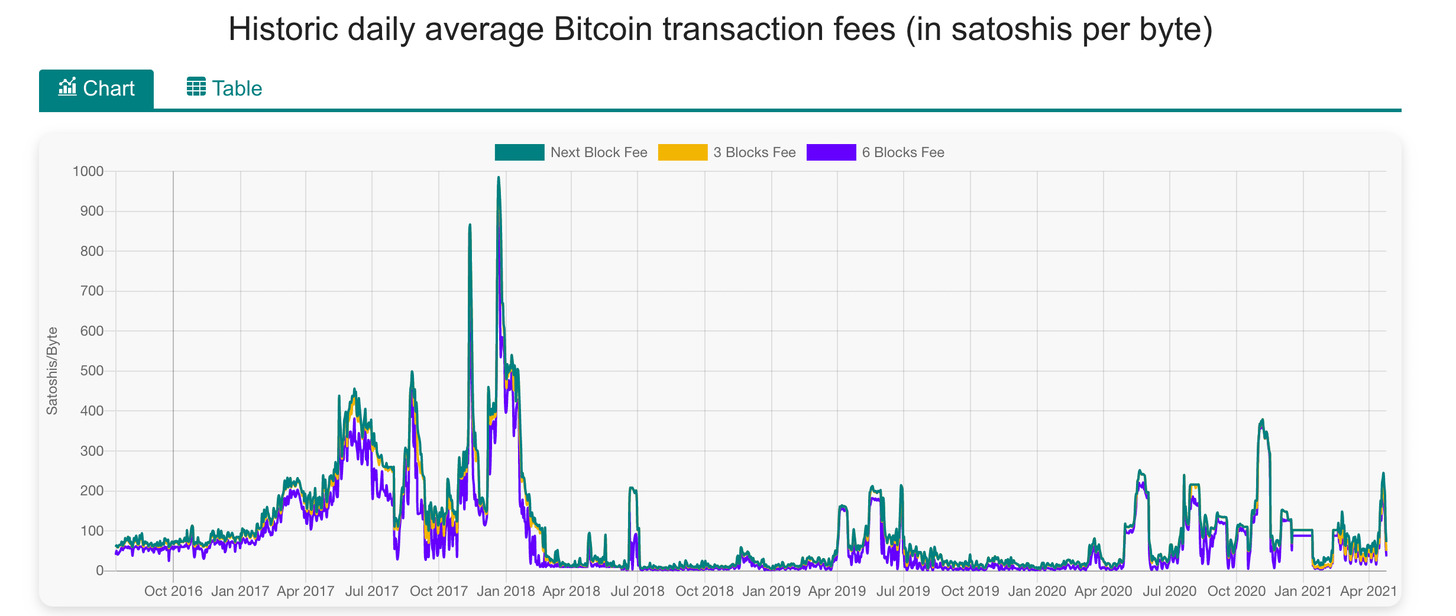A client of ours was asking us to explain the reason why Bitcoin fees have been so high the past few days? The question arrived on April 20th 2021. And yes, there was an uptick in the amount of fees that were being paid to senders of BTC.
Fees are paid by senders which goes to the miners in order for them to get compensated for adding transactions to blocks, so these transactions can get accepted into the blockchain network and processed. As demand for Bitcoin grows during a certain period of time, the number of transactions increases as well, driving the fee prices up. Bitcoin Fees are calculated in Satoshis and paid according to the Satoshis per byte, a unit for measuring transaction priority, defined by the transaction's fee in satoshi divided by the size of the transaction in bytes. The idea of Bitcoin fees work pretty much the same way as in a regular economy. The higher you set the fees for your transaction, the higher that your transaction will be prioritized and faster that it will be processed. Most wallets allow users to set their fees according to the urgency of their transaction, using a dynamic fee structure, but regardless, all fee prices are dependent on the amount of transactions that there are in the mempool at one particular moment and also the fee amount that senders are willing to pay to speed up their transaction. If a large amount of senders decide to pay premium for their transaction, then everyone else who chooses to pay the regular amount may have to wait for the priority transaction to be processed. Check Bitcoin fee estimator to learn more about transactions at an specific time.
Share Tech, Cryptomonedas y sus ramas..

Miners get compensated to make this transactions happened, and many miners fight to get their hands in as many transactions possible but, “Only one miner gets paid, but all the others use massive amounts of electricity.” “And with more fees, mining becomes more profitable, which then induces more miners to enter, which then uses more electricity.” But obviously, the electricity conversation is a long and intense one to add to this article, but we will come back to it another day.
It is important to know the difference between Bitcoin Transaction fees which we explained above and Mining Rewards.
Mining rewards are transactions that award bitcoin miners compensation for successfully generating new blockchain blocks through mining. When bitcoin is newly issued, it is given to the successful miners as a reward.
Bitcoin uses a lottery-based reward system as an incentive for users to update the blockchain frequently. Each miner tries to be the first to add a block to the blockchain and then based on some probability, a winner is chosen and gets to add a block. The winner receives a certain amount of bitcoins as a reward. Miners collect as many transactions into a block as possible, to increase their compensation. The reward goes down by half every 4 years, this process is called Halving, and the last halving happened in 2020, bringing the reward from 12.5 bitcoin to 6.25 btc.

“One of the biggest challenges for bitcoin has been that the fees are too high for it to be used as a simple transaction account, and it takes too long,” There is no way to use Bitcoin to pay for gasoline or pay for coffee or any other daily transactions. Also, besides halving, which diminished the reward amount for miners, also the electricity cost are higher as more competition for transactions become more fierce and more miners come to the industry. It will be very interesting to see what the future of miners is and how this affects the transaction fee structure. As of now, we shall see a very volatile fee price for bitcoin transactions that may go up in the long run as the demand increases.
